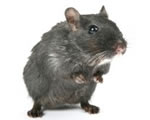 Go to main content
Go to main content
Archive Website of the UK government
Please note that this website has a UK government accesskeys system.
Main menu
Page menu
Home and community

Pest control services

If you need to get rid of common pests in your property, like mice and bedbugs, your local council may be able to help you. Find out which pest control services your council provides and get tips on preventing an infestation.
Insects and pests: when your council can help
Every council varies in the pest control service it provides. Typically, councils will help you to get rid of some or all of the following:
- rats
- mice
- wasps
- fleas
- cockroaches
- bedbugs
- carpet beetles
- pigeons
- ants
Councils don’t usually help with the control of other animals, including feral pigeons, deer, foxes, rabbits, squirrels or moles. Get advice about these creatures at the bottom of this page under ‘Advice leaflets on pests’.
There’s often a small charge for using your council’s pest control services. Contact your council’s environmental health department for advice and to report pests.
Local councils have a responsibility under the Prevention of Damage by Pests Act 1949 for the control of rodents their areas. They also have powers to make sure people take all necessary steps to deal with pests in their property.
How to report pest problems to your council
There isn’t one single, nationwide phone number or email address to report pest problems, as pest control is the responsibility of individual councils.
The link below takes you to your council’s website where you can find out about its environmental health services or report a pest problem. You'll also be able to find a telephone number for the council.
Mice and rats
Mice and rats are two of the most common pests in the home.
How to tell if you have mice or rats
Mice and rats are normally active at night and you might not see them during the day.
A key sign you have mice is finding partially nibbled food, packaging or other materials and small droppings. You may also find nests, which look like balls of material loosely woven together.
The most common sign of rats is droppings, along with evidence of gnawing, tracks, burrows and nests.
Health and safety risks from mice and rats
Mice and rats can carry a wide range of diseases. These can be passed on to humans by contaminating food or surfaces with urine, droppings and hairs. Rats, in particular, can pass on Leptospirosis, a disease that can lead to Weil’s disease and can be fatal to humans.
Rats can also cause structural damage to property. They can gnaw a range of materials, including electric cables and wiring, which could cause fire or electrocution.
Reduce the risk of mice and rats in your home
Mice and rats infestations can be avoided by blocking access to your home:
- check air bricks are in place and intact (don’t block them)
- look for access points around gas, electricity and water pipes
- check that doors fit tightly
- fit cone guards and balloon guards to drainpipes to stop rats climbing up – these are available from hardware or DIY stores
- make sure drain covers and grilles are in place and not damaged
Improved hygiene will discourage mice and rats by restricting their food:
- store food carefully so mice and rats don’t have access
- sweep up spills as soon as they happen
- remove rubbish
- clean under work units and other areas where food debris builds up
- keep the garden free of food debris
- don’t compost meat, fish, bones or bread, as these attract vermin
- avoid over feeding wild birds or a build-up of food residues
Controlling mice and rats yourself
The first step to controlling mice and rats is to find out where they are living and feeding, and their routes between these areas. Look for:
- holes and burrows
- damage and gnawing
- droppings
- footprints
- sightings
- a musky smell
Try blocking any holes you find with newspaper and come back 24 hours later to see which holes have been re-opened. You can then permanently seal all access holes and routes.
If this doesn’t help, you can control most infestations by using traps or poison baiting. For more information on these methods, download an advice leaflet from Natural England.
Fleas: how to get rid of them
If you have fleas in your home, try to identify the source of the problem. In many cases this is a family pet.
Treatment for pets may take the form of insecticide aerosol sprays, pour-on products or a tablet. For more information about the product, consult your vet or the pest control officer at your local council.
Alternatively, the pest control officer from your council can treat your premises using insecticides and products that stop flea development.
Bedbugs
If you find bedbugs in your home, you should immediately contact your local council’s pest control service or a private pest controller. Trying to get rid of them yourself is unlikely to work.
For information and advice, see the NHS Choices website.
Squirrels
Grey squirrels are an introduced species that are now common in most of the UK. They can cause damage and fires when they access buildings and chew electrical wiring.
Natural England has advice about managing grey squirrel problems.
Nuisance birds
‘How to deal with nuisance birds’ gives advice on the options you have when dealing with a problem involving birds.
Advice leaflets on pests
Natural England produces a series of advice leaflets, and some of these deal with less common pests, like squirrels, moles and rabbits. Use the links below to access these leaflets.
 Facebook
Facebook Twitter
Twitter StumbleUpon
StumbleUpon Delicious
Delicious Reddit
Reddit